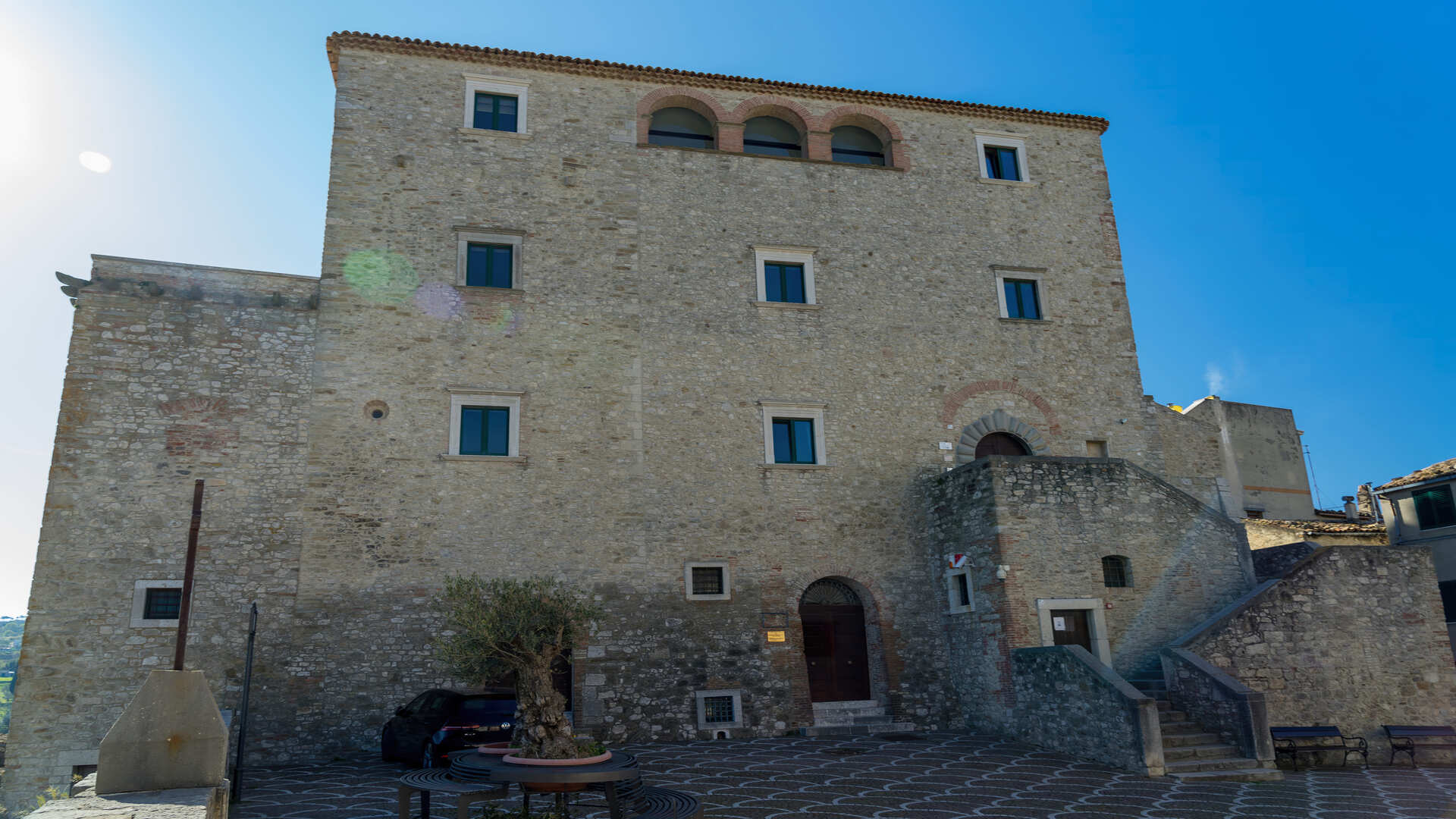The castle is located on the Serrone hill, in the heart of the historical center of the town. It underwent various transformations over the centuries: from castle-fortress to castle-feudal residence in medieval times, finally, in the sixteenth century, in castle-renaissance palace by the feudal family of Di Capua. It then became baronial-marchesal property, then private, now state property. Since December 2014, the Ministry of Heritage and Cultural Activities manages it through the Polo Museale del Molise, in December 2019 became the Regional Directorate Museums.
It looks like a medieval manor transformed into an elegant mansion in the Renaissance. Entering its rooms, one is fascinated by the sixteenth-century frescoes by Donato Decumbertino. Here history, art and landscape intertwine. The original and massive medieval square structure is clearly visible, with the Guelph battlements on the south-west side and the angular towers in the north-east direction, while the ashlar-worked portal, the windows and the small loggia with three round arches on the north-west facade, added in the 15th-16th century, are in Renaissance style. In 1550 Vincenzo di Capua, author of the Renaissance transformation of the castle, commissioned the pictorial cycle of Mannerist style to the Salentine painter Donato Decumbertino (from Copertino). The latter was inspired by the artistic production of Naples and Rome in the mid-sixteenth century. The pictorial cycle, in spite of the gaps, reveals a density of meanings in which mythology and the inspiration to the history of art and antiquity are interwoven with Christian themes to highlight those moral, civil and military virtues that the family of Capua believed to embody and therefore communicate to its guests.
30 I Luoghi della Storia - CASTELLO DI CAPUA GAMBATESA
Back 30 I Luoghi della Storia - CASTELLO DI CAPUA GAMBATESA

Virtual tour
Location
Related resources
Culture, art and tradition
Culture, art and tradition are often interweaved in an itinerary that crosses the whole region and includes medieval castles, peasant and craft museums, places where popular traditions are carefully preserved.
